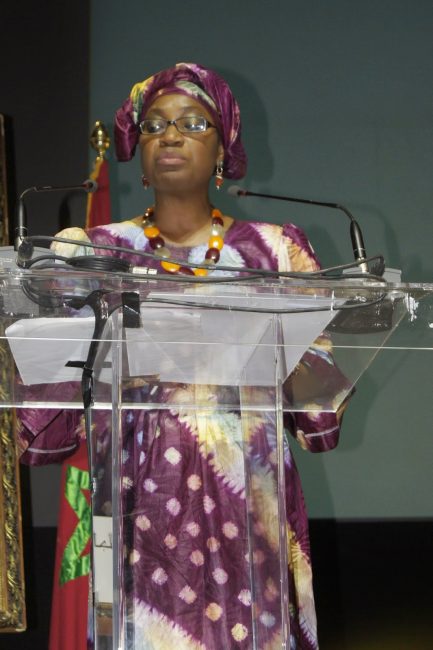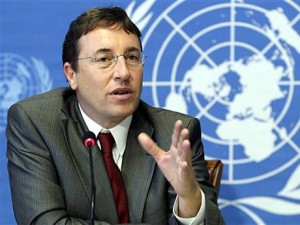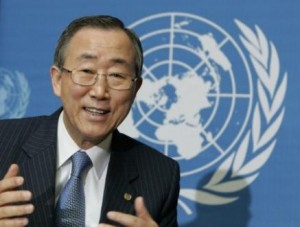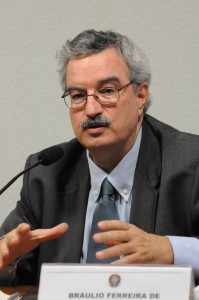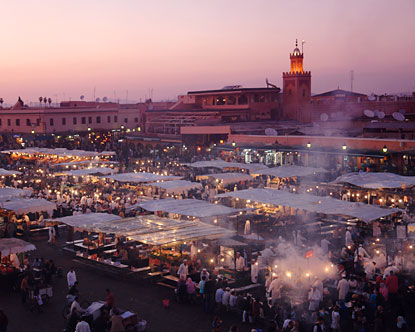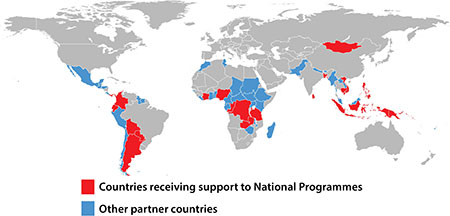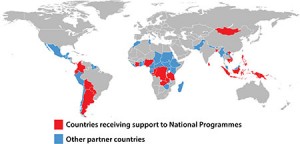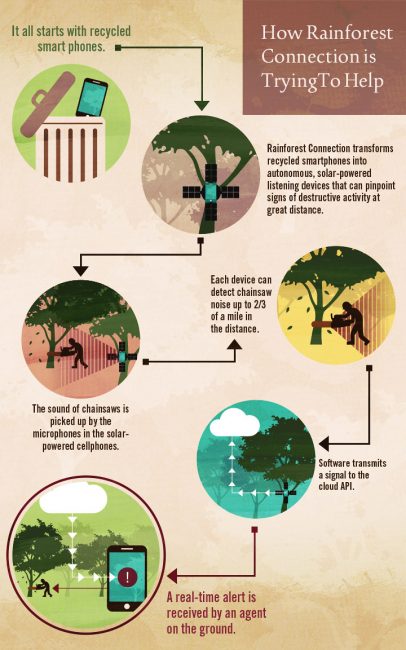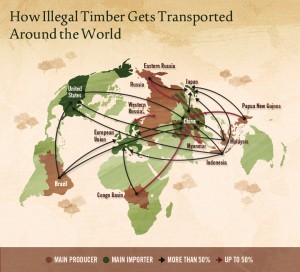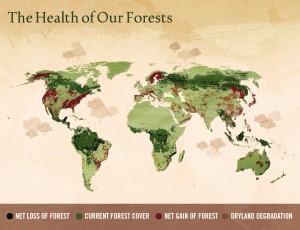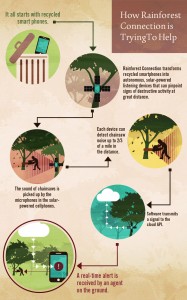Director, Special Initiative Division at the United Nations Economic Commission for Africa (NECA), Dr Fatima Denton, says on Wednesday in Marrakech, Morocco at the opening of the Fourth Annual Conference on Climate Change and Development in Africa (CCDA-IV) that even though climate change constitutes the greatest challenge of Africans, it is also the continent’s greatest opportunity to widen out ripples of prosperity. Denton, who is also coordinator of the African Climate Policy Centre (ACPC), believes that Africa can go a step further by making agriculture the engine of its development
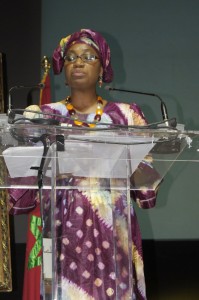
We are gathered under a common theme that reflects our collective resolve, to keep climate food insecurity at an arms length, and to stimulate growth through the translation of climate information into practical action.
The theme over the next few days will reflect the on-going work by the African Union Commission and the need to ensure that agriculture is embedded into a solution space, in which climate change becomes not only a risk amplifier, but an opportunity to shift our current modes of production into a viable entrepreneurial activity.
Our deepest conviction is that climate change remains a double edge sword. It constitutes the greatest challenge of our times, but it is also Africa’s greatest opportunity to widen out ripples of prosperity across our continent. Africa is already defying the rest of world and showing great potential in terms of its macroeconomic growth. Our continent is well poised to use its resources towards achieving structural transformation and severing ties with poverty for good. A 2-degree warming will make a mockery of all our efforts to combat poverty, and instead of embalming our stride towards sustainable development, it will reduce the scope we have to make poverty a thing of the past.
Africa is one of the few regions where hunger and undernourishment continue to claim lives, and robs productive sectors of their most basic tools, healthy women and men who are able to replenish their human and physical capital to stimulate growth in the agricultural sector. Sub-Saharan Africa, for example, has the highest prevalence of hunger with one in four people in the region being undernourished.
Last year we reflected on the theme: Africa on the rise, but, we noted that Africa’s flight towards agricultural sovereignty cannot be achieved if we do not deliberately use agriculture as a catalyst for growth. Unfortunately, Africa’s high economic growth and rising GDP in the last decade, does not reveal the full story of the potential of agriculture as a bedrock to erect and safeguard Africa’s development, now and in the future. The increase in extractive minerals and other non-renewable resources have propelled growth in recent years and injected huge capital flow into the economy.
But in many ways, this increase has diverted policy focus away from agriculture. We are missing the opportunity to use agriculture as a foundation for our industrial pathway.
Agriculture has not served as a transformational hub in fuelling economic growth and propelling industrialisation. Pre-industrial agricultural in the developed world has been largely predicated on three variables: climate, culture, and the deployment of smart technologies. With agricultural transformation came migration, industrialisation, which enabled countries such as Britain, to increase both population growth and improving living standards. Indeed, no industrialised country has achieved sustainable economic growth without a solid agricultural foundation.
We have a major opportunity in turning agriculture in Africa as the engine of development.
Africa currently possesses a demographic dividend, predominantly comprised of a youthful population with over 60% under 30. In addition, Africa is globally experiencing the fastest rate of urbanisation with 50% of the population expected to be living in urban areas by 2030.
This will require a deep reflection not just about producing more food, but also how we produce it using SMART agriculture for example.
Currently, agriculture in Africa employs about 70% of the population. However, the current form of agricultural practice will not serve the aspirations of our younger generation. We must turn it into a source of lucrative business rather than simply a subsistence way of life, and incentivise our younger generation in embracing it as a wealth creating opportunity.
Leaders across Africa have consistently showed their commitment towards agriculture’s role in Africa’s development. The Abuja Declaration of 2006, for example, is a testimony to this commitment. The African Heads of States and Governments recently pledged to uphold the principles of the Comprehensive Africa Agriculture Development Programme (CAADP), and further committed themselves to enhancing investment finance in agriculture, in the Malabo Declaration of June 2014. They reiterated their resolve in the Maputo Declaration, to uphold the allocation of at least 10% of public expenditure to agriculture to ensure its efficiency.
Weaving all these together requires climate information services in overcoming the current challenges posed by climate change. Climate information services enable better integration of the water, energy and land nexus.
They are critical along the entire agricultural commodity value chain.
According to the Africa Agriculture Status Report of 2013, agricultural productivity in sub-Saharan Africa depends on the climate as irrigation only constitutes 10% of productive land. Therefore, managing climate change remains an indispensable component of any future investment in agricultural development.
The Climate for Development in Africa (ClimDev-Africa) programme jointly implemented by the African Union Commission, the United Nations Economic Commission for Africa and the African Development Bank was entrusted with a mandate by the African Heads of States and Governments to improve climate information services in support of African development agenda.
Consolidating the potential for agriculture, using climate information services, will have a multiplier effect in catering for our youth, shared prosperity, and providing food, water and energy security.
This puts Africa along the transitional pathway of a vision towards a green and blue economies agenda. Ladies and gentlemen, let’s use this conference to start stitching the various pillars of African development using climate information services.
Our leaders have recently met in New York during the UN Secretary General Summit on Climate Change. They have accentuated their determination as world leaders to honour commitments of the past and provide concrete assurance that our past actions cannot be the predictors of our future performance.
Africa wants to turn its back on promises that have not gone the extra mile, commitments that have not translated into adaptation resources and funds that have remained pledges and hollow words for our vulnerable communities of farmers, fishers, pastoralists.
We remain convinced that the international agreement under negotiation can only be meaningful to Africa if commitments to support adaptation have a legally binding provision. As such, Africa has proposed a Global Goal for Adaptation in supporting such an outcome. Our governments already bear the costs of adaptation, and these must find recognition as part of contributions in the new agreement.
Action must ripple through to mitigation efforts, and this means that developed nations must shoulder the overwhelming responsibility to turn mitigation efforts into decisive actions. Africa and other developing countries are playing their part. We have recognised that the pledged mitigation efforts by developing countries for 2020 exceed those of the developed world, despite our lower levels of responsibility for causing climate change and limited capacities to address it.
We are here today because our planet is under threat, our resources are being depleted, our ecosystems are being degraded; but most of all, the legacy that we can hand down to our children is diminishing. Our collective resolve is to prepare clear signposts that will lead to a strong post Kyoto Protocol agreement.
Africa and the rest of the world will not gain from a weak agreement in Paris in 2015. We cannot bend history. We are here today because both historical and current emissions have conspired to compromise the existence of our most valuable resources. Hence, we cannot win the fight against climate change unless developed countries take the plunge and raise the ambition bar in delivering on bold mitigation commitments.
Climate change has crystallised what is at stake. It is the core of our humanity – our most sacred assets that will undermine our collective human security if we continue on the “politics as usual” trajectory. Africa is not sitting idly by waiting for blueprints. Our conviction is that we can turn the strong currents of underdevelopment into wealth creation through our hard work, resilience and “inclusive” growth. We have all the ingredients that will give greater hope to our children, as we walk with them in choosing viable pathways that are signposted to sustainable development.
The next generation of African youth will be the custodian of the world, our generation should do all we can today to ensure that the impacts of climate change do not constitute the only legacy that we handed down to them, and that we start weaving together a rich tapestry of prosperity that we can all share for the well being of our people and the future we deserve.

